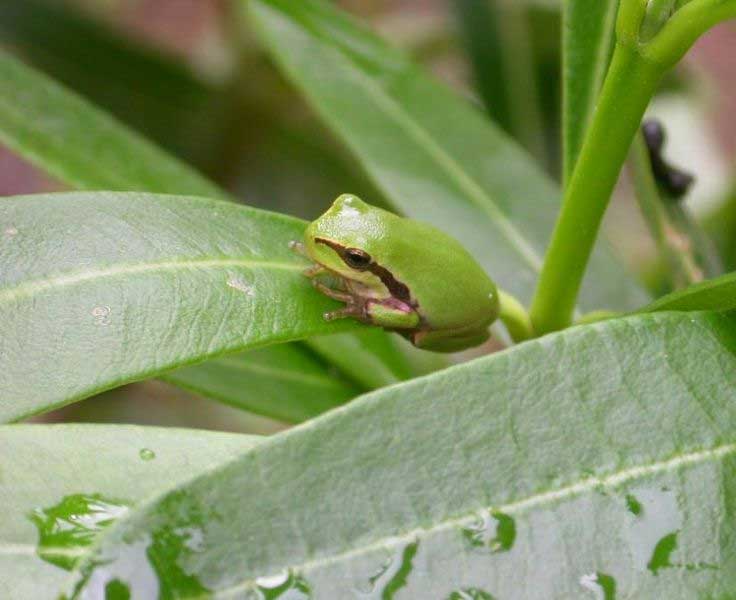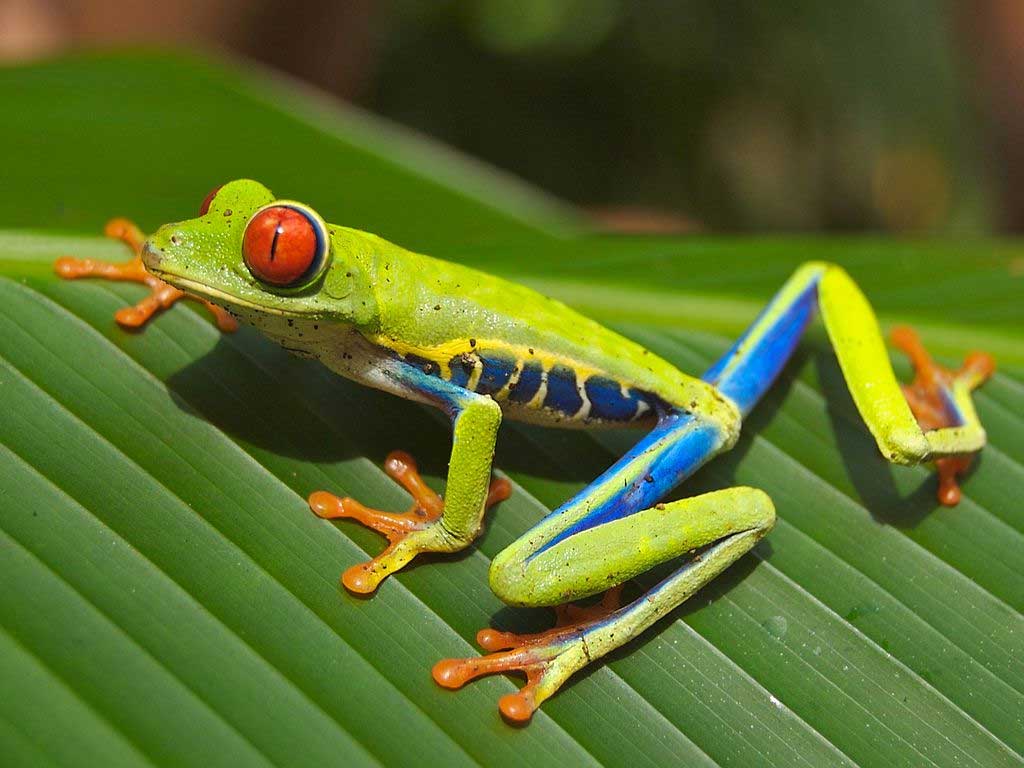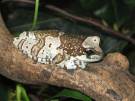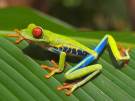
Content |
|---|
The tree frogs they are found worldwide in a wide variety of species and have characteristic sticky discs on their toes. These excellent climbers mainly inhabit trees and shrubs.
Among the most popular species are the American green tree frog (Hyla cinerea), the gray treefrog (Hyla versicolor), the Australian green tree frog (Litoria caerulea), the mission golden-eyed tree frog (Trachycephalus resinifictrix), the northern orange-legged leaf frog (Phyllomedusa hypochondrialis) and red-eyed tree frog (Agalychnis callidryas).
These species, as well as some others tree frogs, increasingly offered as captive breeds; However, wild-caught frogs are still common on the market. Wherever possible, you have to opt for species bred in captivity.
Images "Tree frogs"
Sex differences
The sexes can be distinguished in many species by the coloration of the throat, which is usually more striking (yellowish to black) in sexually mature males than in females (from white to gray). Females tend to grow slightly larger than males.. Males ready to mate call, sometimes very strongly and persistently.
Behavior
The tree frogs do not show social behavior and can stand alone, in pairs or groups in well structured terrariums. Do not socialize different species or animals with clear differences in size. Each animal must have enough places to sit, rest and hide. The tree frogs they are mainly twilight and night.
Terrarium

One terrarium for tree frogs must always be tall enough, for example, 60 x 40 x 60 cm. (length x widht x hight) for smaller species, as the American green tree frog (Hyla cinerea), and 100 x 40 x 80 cm. (length x widht x hight) for larger frogs like the Australian green tree frog (Litoria caerulea), each for a maximum of 4 animals. Caution: non-acclimatized animals tend to jump against the glass with great force and injure themselves, especially on the head and muzzle.
Fluorescent tubes with a daily lighting time of 10 to 12 hours are suitable for lighting. The temperature can be regulated with the help of a suitable heating mat, which is fixed to the rear wall from the outside. For most species, a slight temperature gradient in the terrarium of about 22 to 28 °C (max. 24 °C for subtropical species) with a humidity of 60 to the 70 %. At night, the temperature should drop to about 20 °C; at the same time, humidity can rise up to 90 or the 95 % for tropical species. This can be achieved by spraying the terrarium with warm water or using a sprinkler system.. For the basic temperature, weak heating mats can be used, installed outside the terrarium. They can be used to heat the floor (at most one third of the soil surface!) or the walls. With the help of a thermocontroller, the heating mat can be specifically controlled to prevent overheating. Precise thermometers and hydrometers are needed to measure temperature and humidity.
For climbing animals, 2, preferably 3 sides of the terrarium should be covered with cork or similar. climbing facilities, like roots, lianas, remained, etc., have proven their effectiveness. Hollow bamboo sticks and cork tubes are popular hiding places. Depending on the species, a shallow water basin in which animals can also bathe or a larger basin of water (for example, for the Australian green tree frog – Litoria caerulea) it is also part of the basic equipment. Terrarium soil or coconut substrate are suitable as a substrate. The substrate should always be kept slightly moist. Natural planting creates additional retreat possibilities and ensures uniform and increasing humidity.
Diet
The tree frogs they feed exclusively on small live animals. The insects (crickets, crickets, Little grasshoppers, etc.) make up the main part of your diet, but many species also like to eat worms or slugs. Regular administration of a mineral supplement ensures healthy bone growth. Mealworms, Zophobas or wax moths should only be fed rarely due to their high protein and fat content. For the adults of the larger species it is sufficient to feed each 2 or 3 days. The Australian green tree frog – Litoria caerulea) you tend to become obese due to your lazy lifestyle
Care
Food scraps and droppings should be removed daily. The water bowls should also be cleaned daily and filled with fresh water.
Animal health must be monitored daily. The most frequent health problems in the tree frogs are the softening of the bones, emaciation and changes in skin and stools. If there is any abnormality, consult a veterinarian who is familiar with amphibians.
Acclimatization and handling
Amphibians are animals of pure observation and NOT must be caressed. In the first days in his new home, animals need adequate rest to get used to their new environment. Due to the sensitivity of your skin, it is recommended to capture the tree frogs only with the help of small containers.
Special features
The tree frog has a slightly toxic skin discharge that can cause irritation when it comes in contact with human skin (protective gloves!).
According to the area of origin, controlled hibernation can have a vitality-boosting effect. American and Asian tree frog species from temperate climates should not be placed in the garden pond under any circumstances, since there is a danger that the fauna will be distorted.
Attention: all native amphibian species are protected species and should not be taken from the wild. But, most species of tree frogs Non-native species are not subject to the species protection law. But, the red-eyed tree frog (Agalychnis callidryas), for example, is subject to registration and proof of origin is required.






